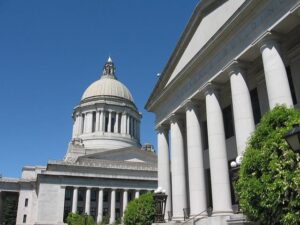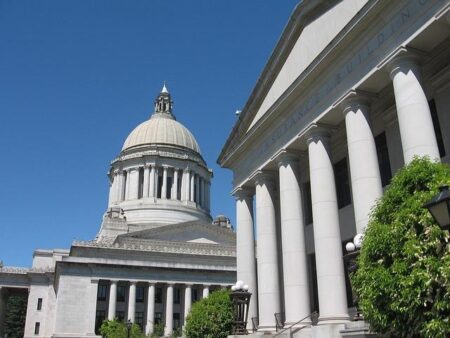Washington State Faces Unprecedented Retail Crime Surge: Economic and Social Implications
Washington Tops U.S. in Retail Crime Rates and Financial Impact
Recent analyses reveal that Washington state currently experiences the highest rate of retail-related crimes in the United States, presenting a formidable challenge for merchants and public safety officials alike. The escalation in incidents such as shoplifting, vandalism, and organized retail theft has placed considerable pressure on businesses, leading to increased spending on security and insurance, as well as significant inventory losses. These factors collectively impose a heavy economic toll on local communities and the broader state economy.
Several key elements contribute to this troubling trend in Washington:
- High urban density coupled with pronounced economic inequality
- Decreased law enforcement visibility in commercial zones
- Legal ambiguities and enforcement difficulties related to theft offenses
| Metric | Washington State | U.S. Average |
|---|---|---|
| Retail Crime Incidents (per 1,000 stores) | 35.4 | 22.1 |
| Annual Economic Loss (in millions) | $450 | $290 |
| Increase Since 2020 | 18% | 9% |
Unpacking the Root Causes Behind Washington’s Retail Theft Spike
Experts attribute the surge in retail theft across Washington to a complex interplay of social, economic, and legislative factors. The economic fallout from the COVID-19 pandemic has intensified financial hardships for many residents, fueling an increase in theft-related offenses. Additionally, recent legislative reforms aimed at reducing penalties for certain theft crimes have sparked debate, with some arguing these changes may inadvertently encourage repeat offenses. Retailers also cite workforce shortages as a critical factor, diminishing the capacity for effective in-store theft deterrence and rapid incident response.
Further contributing factors include:
- Concentrated urban populations providing ample opportunities for theft
- Weaknesses in supply chains facilitating the resale of stolen merchandise
- Limited surveillance and security infrastructure in many retail districts
- Declining community investment reducing the availability of crime prevention programs
| Contributing Factor | Level of Impact | Key Stakeholders |
|---|---|---|
| Economic Hardship | High | Local Governments, Social Agencies |
| Legislative Changes | Moderate | Lawmakers, Police Departments |
| Retail Workforce Shortages | High | Business Owners, HR Teams |
| Surveillance Deficiencies | Moderate | Municipal Authorities, Security Providers |
Consequences of Retail Crime on Businesses and Community Well-Being
The persistent rise in retail crime is inflicting substantial operational and financial damage on Washington’s local businesses. Incidents of theft and property damage force retailers to allocate more resources toward security enhancements and insurance, while also suffering from inventory shrinkage that erodes profit margins. Small and mid-sized businesses, often lacking the capital for advanced security systems, are particularly vulnerable, risking closures that diminish local economic diversity and consumer choice.
Moreover, the increase in retail crime negatively affects community safety perceptions, discouraging shoppers and investors alike. This atmosphere of insecurity can lead to reduced foot traffic and economic stagnation in affected neighborhoods. Key repercussions include:
- Rising expenditures on security and law enforcement
- Higher insurance costs for retail establishments
- Declining employee morale and job stability
- Lower community engagement and slowed economic development
| Area Affected | Observed Impact |
|---|---|
| Security Expenses | Increased by 25% over three years |
| Inventory Loss | Average $30,000 lost annually per store |
| Public Safety Perception | 40% of residents feel less secure |
| Business Viability | 15% rise in stores at risk of closure |
Proposed Measures and Policy Initiatives to Mitigate Retail Crime in Washington
In response to the escalating retail crime crisis, Washington’s policymakers and law enforcement agencies are considering a multifaceted approach to curb theft and enhance public safety. Central to these efforts is the proposal to impose tougher penalties on habitual offenders, alongside increased funding for specialized retail crime units within police departments. Upgrading surveillance capabilities through the deployment of advanced camera systems and fostering real-time information exchange between retailers and law enforcement are also key components of the strategy.
Complementing these enforcement measures, community-focused programs are gaining traction as vital tools to address the root causes of retail crime. Initiatives under consideration include:
- Expanded social services targeting poverty, addiction, and related issues
- Partnerships with retail organizations to enhance employee training on theft prevention and conflict resolution
- Development of diversion programs aimed at reducing repeat offenses among youth
The following table outlines the anticipated effectiveness and timelines for these proposed interventions:
| Intervention | Expected Reduction in Crime | Estimated Rollout Period |
|---|---|---|
| Enhanced Legal Penalties | 15% | 6 to 12 months |
| Improved Surveillance Systems | 20% | 12 to 18 months |
| Community Engagement Programs | 25% | 18 to 24 months |
Conclusion: Addressing the Retail Crime Challenge in Washington
As retail crime rates continue to climb nationwide, Washington state remains at the forefront of this pressing issue. The data underscores the urgent need for coordinated action among retailers, law enforcement, policymakers, and community organizations to develop effective solutions. By combining enhanced legal frameworks, technological advancements, and social interventions, Washington can work toward reversing the upward trend in retail theft, safeguarding businesses, and restoring a sense of security within its communities.






